


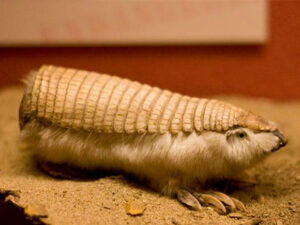
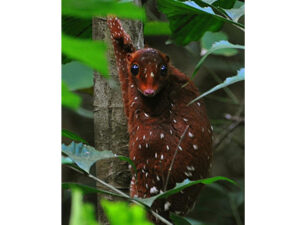
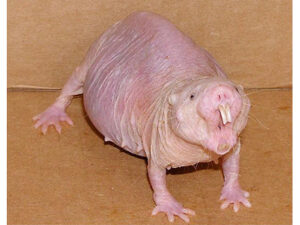
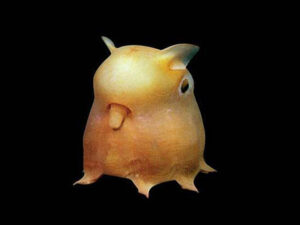
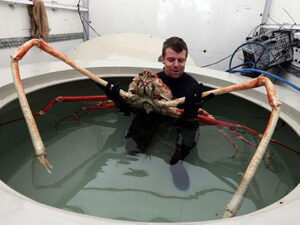
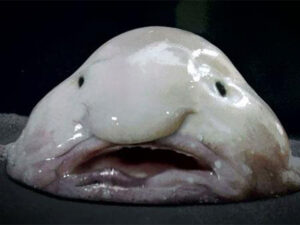

The Zebra Duiker is a small antelope found in West Africa, primarily in Liberia, Ivory Coast, Sierra Leone, and occasionally Guinea. It is a diurnal animal but shy and rarely seen in the wild.
The Zebra Duiker has a golden-brown or reddish body with 12 to 16 black transverse stripes running from the shoulders to the rump. The offspring are born with closer-set stripes, which become more spaced out as they grow.
The Zebra Duiker is an omnivorous animal, feeding on leaves, shoots, fruits, and insects. It is a forest-dwelling species, living in dense woodland areas with shrubs and trees.
A special feature of the Zebra Duiker is its communication system. The animal emits a variety of sounds, including squeaks, growls, and hisses, to communicate with other Zebra Duikers.
The Zebra Duiker is a species vulnerable to extinction due to habitat loss and hunting. The current population is estimated at around 28,000 individuals.
Some interesting facts about the Zebra Duiker:
- The Zebra Duiker is one of the smallest antelopes in Africa, with a length of up to 87 cm and a weight of up to 16 kg.
- The Zebra Duiker is a solitary animal but can form pairs during the breeding season.
- The gestation period of the Zebra Duiker lasts about 224 days. Females give birth to a single offspring at a time.
Zebra Duikers live for about 10 years in the wild.
Tufted Deer, also known as the muntjac, is a small deer found in Asia. It is a diurnal animal but shy and rarely seen in the wild.
The Tufted deer inhabits a variety of habitats, including forests, grasslands, and mountains. It is found throughout Asia, from the Himalayas to Japan.
The Tufted deer has a reddish-brown body with a white patch on the chest. Males have small, curved antlers, while females do not have antlers. The offspring are born with white spots on their bodies, which fade as they grow.
The Tufted deer is an herbivorous animal, feeding on leaves, shoots, fruits, and flowers.
The Tufted deer is a solitary animal but can form groups during the breeding season. Males compete with each other for the right to mate with females.
The gestation period of the Tufted deer lasts about 6 months. Females give birth to 1 to 2 offspring at a time.
The Tufted deer is a vulnerable species to extinction due to habitat loss and hunting. The current population is estimated to be around 500,000 individuals.
The Tufted deer has a tuft of hair at the tip of its tail, which it uses to communicate with other Tufted deer. The tuft also helps the animal maintain balance when leaping from tree to tree.
The Tufted deer is one of the smallest deer in the world, with a length of up to 90 cm and a weight of up to 20 kg. The Tufted deer is a fast and agile animal, capable of jumping up to 3 meters in height.
Tufted deer are an important food source for tigers, leopards, and other predators.
The star-nosed mole is a small burrowing mammal that inhabits low-lying, damp areas in parts of North America. It is the only member of the tribe Condylurini and the genus Condylura.
The star-nosed mole has a gray-brown body with a long, hairless snout surrounded by 22 pinkish tentacles. These tentacles are covered in thousands of tactile receptors, allowing the mole to detect prey such as worms and insects in the dark.
The star-nosed mole is a solitary and nocturnal animal. It spends most of its time digging tunnels in moist soil. It is also a proficient swimmer and can dive for up to 2 minutes.
The star-nosed mole is a non-threatened species of extinction. It plays a vital role in the ecosystem as it helps control insect populations.
The pink fairy armadillo, or pichiciego, is the smallest armadillo in the world. It is found in Argentina, Bolivia, and Paraguay. It is a nocturnal and solitary animal that spends most of its time underground, where it feeds on larvae, worms, and roots.
The pink fairy armadillo has a small and robust body, measuring about 8 to 10 cm in length. Its fur is pink or white with black spots. The shell is thin and flexible and does not completely cover the animal’s body.
The pink fairy armadillo is a rare and endangered species. Its primary threats include habitat loss and hunting.
The Sunda Colugo, also known as the Malayan colugo, is an arboreal mammal that resides in the tropical forests of Southeast Asia. It is the largest colugo in the world, measuring approximately 30 to 40 cm in length and weighing between 1 to 2 kg.
The Sunda Colugo has a slender body covered in brownish-gray fur. It possesses a membrane of skin called a patagium, which extends from the neck to the tips of its fingers and toes. This membrane allows the Sunda Colugo to glide from tree to tree, covering distances of up to 100 meters.
Being a nocturnal and solitary animal, it spends most of its time in trees, where it feeds on leaves, shoots, fruits, and flowers. It plays a crucial role in the forest ecosystem by aiding in seed dispersal and controlling insect populations.
It is a vulnerable species to extinction, primarily due to habitat loss and hunting. The current population is estimated to be around 100,000 individuals.
Here are some special features of the Sunda Colugo:
- It possesses a skin membrane that allows it to glide from tree to tree.
- It has a sweat gland in its throat that secretes a sticky liquid, which the animal uses to mark its territory.
- It has a complex communication system with a variety of different vocalizations.
- Sunda Colugo offspring are born with open eyes and can walk shortly after birth.
The naked mole-rat is a subterranean rodent native to East Africa. It is the only species in the genus Heterocephalus and belongs to the family Bathyergidae, which also includes the naked mole-rat’s close relatives, the Damaraland mole-rats.
These animals are highly social and live in colonies of up to 300 individuals. Each colony is led by a single breeding female, the only one capable of giving birth. Other members of the colony are workers responsible for tunnel construction and maintenance, food collection, and caring for the offspring.
Naked mole-rats are remarkably resilient and have several special characteristics that help them thrive in their underground environment. They are completely hairless, which assists in regulating body temperature in hot and humid underground conditions. They also have a high metabolic rate, allowing them to extract energy from the low-quality food they find underground.
Furthermore, naked mole-rats exhibit remarkable resistance to cancer, pain, and oxygen deprivation. They can also live up to 30 years, significantly longer than most rodents.
Here are some of the unique features of the naked mole-rat:
- Hairlessness: Their naked skin helps regulate body temperature in hot and humid environments.
- High metabolic rate: This allows them to extract energy from low-quality underground food sources.
- Cancer resistance: Naked mole-rats are nearly immune to cancer.
- Pain resistance: They are resistant to certain types of pain.
- Oxygen deprivation resistance: Naked mole-rats can survive up to 18 minutes without oxygen.
- Longevity: They can live up to 30 years.
Naked mole-rats are fascinating creatures that are being studied by scientists worldwide. Their resistance to diseases and longevity may provide valuable insights for the development of new treatments for humans.
The Dumbo octopus is a type of octopus that inhabits the deep ocean. It is named after its large fins, which resemble the ears of Disney’s Dumbo the elephant.
They are found in oceans worldwide but are more common in temperate and tropical waters. They live at depths of up to 6,000 meters, where water pressure is 600 times greater than at the surface.
These animals are small, with a body length of up to 30 centimeters. They have eight tentacles with suckers that they use to capture prey. Their fins are used for swimming and balance.
Dumbo octopuses feed on a variety of animals, including fish, crustaceans, and mollusks. They are active predators that use their suckers to capture their prey.
Dumbo octopuses are solitary animals that inhabit burrows or crevices in rocks. They are hermaphrodites, which means that each individual has both male and female reproductive organs.
Dumbo octopuses are fascinating creatures that are still relatively poorly understood. They serve as an example of the diversity of life that exists in the depths of the ocean.
The Japanese spider crab, also known as the giant Japanese crab, is the largest known arthropod in the world. It is found in the coastal waters of Japan and can grow up to 3.8 meters in leg span.
The Japanese spider crab has a hard, spiny shell. Its legs are long and slender, which it uses for swimming and moving along the seabed.
Japanese spider crabs are scavengers, meaning they feed on dead animals. They can also consume mollusks, fish, and algae. They are a protected species in Japan, and it is illegal to capture or eat these crabs.
Here are some interesting facts about the Japanese spider crab:
- They can live for up to 100 years.
- They can weigh up to 20 kg.
- Their claws are so strong that they can break the shells of mollusks.
- They are capable of regenerating lost limbs.
The blobfish (Psychrolutes marcidus) is an abyssal fish that inhabits the deep ocean, typically found at depths ranging from 600 to 1200 meters off the coasts of Australia and Tasmania. The water pressure at these depths is immense, more than 60 times greater than at the ocean’s surface.
It has a gelatinous and flabby body with few scales and bones, which helps it survive in the high-pressure environment of the deep sea. The blobfish also has a large head and a perpetually sad-looking expression, earning it a reputation as one of the ugliest fish in the world.
As a carnivore, the blobfish feeds on small crustaceans, fish, and other animals that fall to the seafloor. It is an ambush predator, remaining stationary and waiting for prey to approach before striking.
The blobfish is a vulnerable species because it is threatened by trawl fishing, which destroys its habitat and captures fish indiscriminately.
Here are some interesting facts about the blobfish:
- It can grow up to 30 cm in length and weigh up to 12 kg.
- It lacks facial muscles, so it cannot change its expression.
- It has a low metabolic rate, which means it can survive on very little food.
- It is an ovoviviparous fish, meaning that eggs hatch inside the female, and the offspring are born alive.
The Fossa (Cryptoprocta ferox) is a carnivorous mammal endemic to Madagascar, the fourth-largest island in the world. It is the largest carnivorous mammal in Madagascar and the only predator capable of hunting all types of lemurs, including the largest ones.
Fossas are solitary and nocturnal animals that spend most of their time in trees. They are excellent hunters with a varied diet that includes lemurs, small mammals, birds, reptiles, and amphibians.
They have a long, slender body with muscular limbs and a long, thick tail. Their fur is short and varies in color from brown to reddish. Fossas have a large head with rounded ears and big, yellow eyes.
Fossas are highly important to Madagascar’s ecosystem as they help regulate the populations of other species. They are also a significant tourist attraction for the island.
Here are some interesting facts about the Fossa:
- They are the only carnivorous mammals capable of climbing up and down trees headfirst.
- They have a very strong bite, allowing them to kill prey much larger than themselves.
- They are highly intelligent and can be trained.
- The Fossa is a threatened species due to habitat loss and illegal hunting.